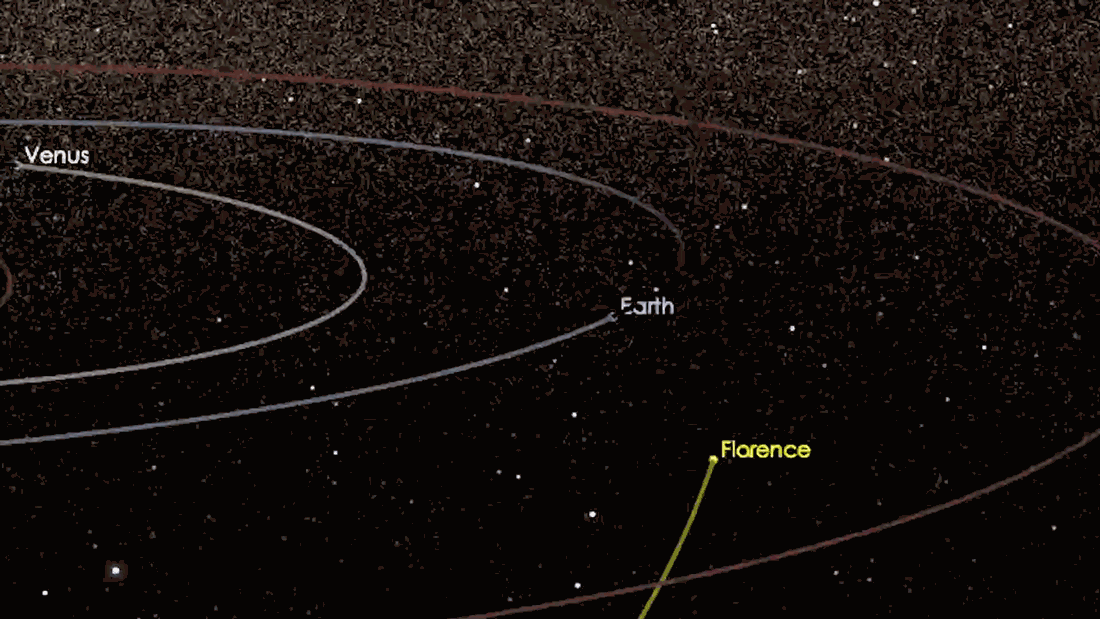In the roughly 2 decades that scientists have systematically tracked asteroids speeding past Earth, never before has one so large come so close. On Friday, an asteroid called Florence will zip by our planet just 7 million kilometers away, or about 18 times the Earth–Moon distance, according to NASA. Many other asteroids have come closer, but none was as big as Florence, which measures about 4 kilometers in diameter.
“We know from its orbit that [Florence] won’t hit Earth,” said David Jewitt, a planetary astronomer at the University of California, Los Angeles. But if it did, there would probably be “global effects,” including human extinction, he said.

The high stakes of such impacts have loomed in the minds of scientists, national security experts, and the public since at least the 1980s. That’s when researchers found evidence that a collision 66 million years ago between Earth and a much larger rock, about 10 kilometers across, may have obliterated the dinosaurs and many other species inhabiting our planet at the time.
A Rare Close Encounter
Scientists have been tracking Florence, named in honor of nursing pioneer Florence Nightingale, since it was discovered in March 1981 at an Australian observatory. Repeated observations of the asteroid have revealed that it orbits the Sun in a plunging path that takes it above and below the plane of the solar system. Researchers believe that Florence likely escaped from our solar system’s belt of asteroids located between Mars and Jupiter.

As Florence and Earth move along their respective orbits, the distance between them varies over time. On Friday, Florence will be the closest it’s been since 1890, and a similarly close encounter won’t occur again for more than 5 centuries. It’s also classified as a potentially hazardous asteroid, along with more than 1,800 other asteroids that meet the requirements in terms of their size and approach distance to Earth.
Easy on the Eyes
Florence’s close approach affords a unique scientific opportunity because it will be relatively larger and brighter in the sky and therefore easier to observe. “We’d like to study what its surface looks like and whether it’s a solid body or a collection of smaller pieces held together by gravity,” said Amy Mainzer, a planetary astronomer at NASA’s Jet Propulsion Laboratory in Pasadena, Calif., who has studied Florence in the past.
“We’d like to study what its surface looks like and whether it’s a solid body or a collection of smaller pieces held together by gravity.”
Researchers will also be using NASA’s Goldstone Solar System Radar facility in California’s Mojave Desert to determine whether Florence has a natural satellite of its own, a moon. Fifteen percent of asteroids have moons, Mainzer noted, and finding a moon orbiting Florence would make it possible to calculate the asteroid’s mass.
Florence can be spotted through a small telescope as it passes through the constellations Piscis Austrinus, Capricornus, Aquarius, and Delphinus.
—Katherine Kornei (email: [email protected]; @katherinekornei), Freelance Science Journalist
Citation:
Kornei, K. (2017), Big space rock to pass near Earth on Friday, Eos, 98, https://doi.org/10.1029/2017EO081075. Published on 31 August 2017.
Text © 2017. The authors. CC BY-NC-ND 3.0
Except where otherwise noted, images are subject to copyright. Any reuse without express permission from the copyright owner is prohibited.

